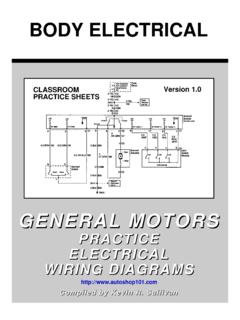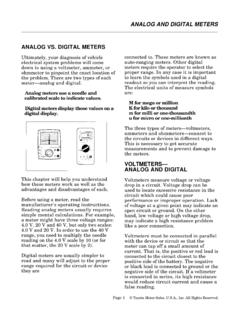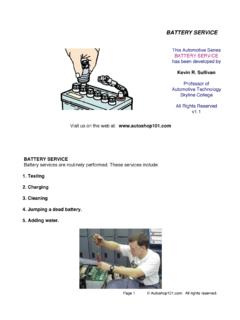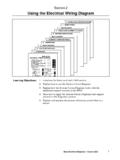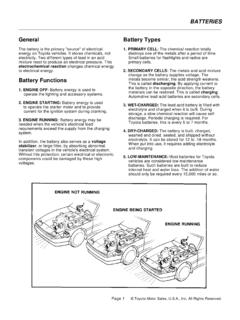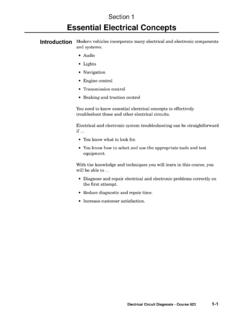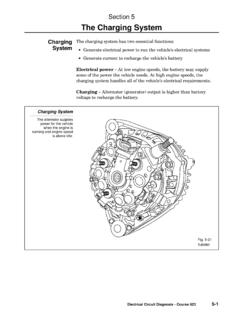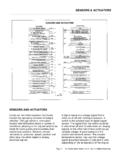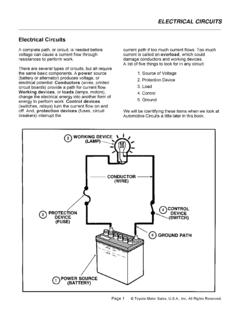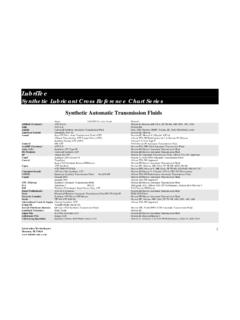Transcription of Section 4 Six-Step Troubleshooting Plan - …
1 Body Electrical Diagnosis - Course L65211. Introduce the Six-Step Troubleshooting Explain what needs to be done when verifying a Explain all the components of a related symptoms Using the circuit tracing technique, show how to analyze thesymptoms and define the problem you need to Show how to use the EWD when isolating a Explain repair techniques for wires, terminals, and Perform a practice case study on the Lexus Body ElectricalSimulator using the Six-Step 4 Six-Step Troubleshooting PlanLearning Objectives: Section 42 LEXUS Technical TrainingSix- step Troubleshooting PlanBody Electrical Diagnosis - Course L6523 You have now covered all of the tools" used when diagnosing electricalproblems.
2 Basic electrical concepts Use of the EWD Tracing current flow through a system circuit diagram Use of the DVOM & jumper wiresNow it's time to put all of these components together to diagnoseelectrical would be great if we could just walk up to a vehicle and instinctivelyknow where an electrical problem was, and what exactly had to bedone to repair it. This happens occasionally when fixing a problem thatyou have seen a number of times on a particular model. Yourexperience from repeatedly fixing this problem allows you to make therepairs quickly, with no wasted what about problems that you see on only an occasional basis,where there is no trend" of past failures to help you?
3 To diagnose thesetypes of problems in the least amount of time, you need to make yourdiagnosis following a Six-Step Troubleshooting L623, the Six-Step Troubleshooting plan was introduced. Thesesteps are:1. Verify the complaint2. Determine the related symptoms3. Analyze the symptoms4. Isolate the trouble5. Correct the trouble6. Check for proper operationBy using this Troubleshooting plan , you can minimize the amount of timespent diagnosing the circuit by performing only the checks that you needto make, with an emphasis on checks that are the easiest to finding and fixing an electrical problem doesn't depend onluck, but on your skills.
4 Applying what you know about circuits, usingthe EWD, and devising a strategy to isolate the location of the Six-Step approach is a way to organize your efforts, keeping youon-track while you are Troubleshooting the DiagnosticProcessSix-StepTroubleshooting PlanSection 44 LEXUS Technical TrainingSix- step Troubleshooting PlanSix- step Troubleshooting PlanBody Electrical Diagnosis - Course L6525 This is the first step in any diagnostic process. When you are handed arepair order with a customer's complaint on it, there are three thingsthat you must do:1.
5 You must be able to identify the problem the customer noted2. You must determine if it is a problem or not3. If there is a problem, determine if it is intermittent or continuousThe average customer is not a technically oriented" person. When theydescribe a problem, it's not always going to be easy to understandthem, especially if you weren't the person who wrote it on the knowledge about how each system works is very important inrecognizing what the customer is talking about. If you don't know howa system is supposed to operate when it's OK, you won't know when itis broken.
6 Because of the number of systems/circuits on the vehicle andthe increased use of ECU-type controls in them, it is becoming moredifficult to keep up with the details on how all the systems, model tomodel, best places to look for information on how a system should operateare the System Outline in the EWD and the Owner's the ComplaintStep #1:Verify theComplaintIdentify theProblemSection 46 LEXUS Technical TrainingSometimes what seems like a problem to a customer is actually anormal function of the circuit. For example, the customer complaintcould be about the power door locks: When the key is in the ignition,with the door open, the power door locks won't lock.
7 "A condition such as this is not a problem, but a normal function of thePower Door Lock ECU and its key confine" feature which is designedto prevent the customer from locking their keys in the car. For thecustomer, information about the operation on all the electrical systemson the vehicle can be found in the Owner's Manual. For you, detailedinformation about the operation of different electrical systems can befound in the EWD, as well as in the Repair Manual Body are also instances where the customer is noticing a characteristicof the vehicle.
8 There are no fixes" for these non-problems. The bestway to identify this type of condition is to compare the customer'svehicle to a known good theOwner s Manualas a ReferenceLike the EWD systemoutline, the Owner sManual is a good resourcefor information on howdifferent systems or circuitsare supposed to a ProblemExist? Six-Step Troubleshooting PlanBody Electrical Diagnosis - Course L6527 When verifying the problem, you must also determine if the problem iscontinuous or intermittent. If the problem is continuous (or not inter-mittent), it should be fairly obvious when you operate the suspect problems can be more difficult to find.
9 If the problem isintermittent, you'll need to know as much information as possible (fromthe ASM or customer directly) about the conditions that were presentwhen the problem occurred for the example, electrical problems can be triggered by ambienttemperature, vibrations from road conditions, weather, or the type ofdriving (only on turns, hills, etc.) How the customer actually operatesthe system can also be a the conditions are repeated and the problem does notre-occur, make a thorough visual inspection of the harness, connectors,and terminals, with attention to the terminal spread.
10 Simulate thevibrations that are caused during driving by wiggling" harnesses andconnectors. Keep in mind that as you move the harnesses or disconnectconnectors, you may cause the problem to temporarily fix" itself. Whilemaking your inspections, try to minimize these changes" to the circuit,and keep track of which harnesses or connectors you have disconnectedor moved. Although it will be difficult in some cases, be sure to identifyexactly what is causing the problem, and NEVER consider thevehicle's problem solved if it happens to magically fix itself".
